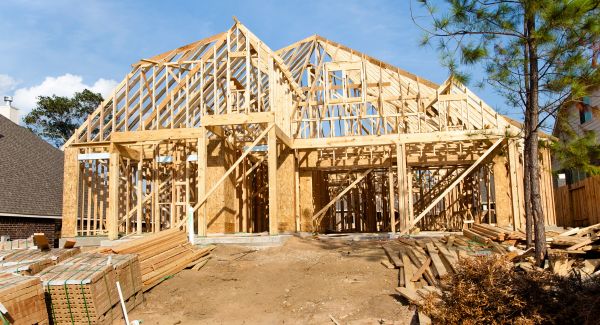
Last Updated on May 16, 2024
Did you know that a third of all homes for sale are new construction? If you’ve had a hard time finding a pre-existing home in this busy market, it might be time to turn your attention to the bevy of new construction homes available. Let’s take an in-depth look at the pros and cons of buying new construction.
Move-in ready
We’re not telling you anything earth-shattering when we say new construction doesn’t require you to pick up some power tools and go to work, but as pre-existing homes continue to age, this is a huge benefit worth mentioning. With the average age of homes on the market nearing 40 years, most homeowners purchasing a pre-existing home will have a considerable amount of work ahead of them if they aim to bring it up-to-date. As construction labor and material costs continue to rise, embarking on home remodels can add up quickly.
Lower maintenance costs
Besides updating a tired kitchen or bath, you also won’t have to worry about replacing big-ticket items any time soon. No need to set aside funds to replace the aging roof, the failing windows or even the over-used HVAC unit. New construction homes are also built up-to-code. On the contrary, purchasing an older home means you could run into plumbing issues, the presence of hazardous materials, termite damage, radon, inefficient windows, inadequate electrical issues, and more.
What’s more, new homes are typically offered with a home warranty, giving your wallet and your mental state a break if something goes awry.
Modern floor plan
No demo required to enjoy new builds! Builders tend to build what’s popular, and for that reason, new construction generally has a more open concept layout and more storage overall, meaning you’ll find larger closets in bedrooms, linen storage, and a highly-functional pantry.
New construction is typically more expensive than pre-existing homes, but affordability is getting better
Affordability is at the top of everyone’s mind when shopping for homes and builders have caught up. The price gap between the median-priced pre-existing home in 2023 compared to 2024 has shrunk significantly. In 2023, the price gap difference when looking at the median sales price of single-family homes was $59,400. In 2024, that number diminished to only $33,500.
The process can take longer
According to a 2023 Realtor.com study, the average buyer took about 10 weeks to find a home. Once you factor in a closing period of 30-60 days, the process of buying a pre-existing home can take an average of 4-ish months. When buying new construction, the process can be longer, taking an average of 6.5 months from start to finish.
Landscaping will be sparse
Most of the time, builders in new developments will clear a good bit of the land, leaving mature landscaping and trees behind. If you have your heart set on a neighborhood with lush trees and developed landscaping, a new build might be hard for you to cope with. Putting up a privacy fence and fast-growing privacy bushes might be a workaround while you wait for the other landscaping to catch up.
Property taxes may be higher
Because new construction neighborhoods lack established infrastructure, property taxes may be higher. As you consider your overall budget, it’s a good idea to get an accurate assessment of what you’ll be paying in property taxes for the new home you’re thinking of buying.
Keep reading: 5 mistakes to avoid when buying a new construction home



